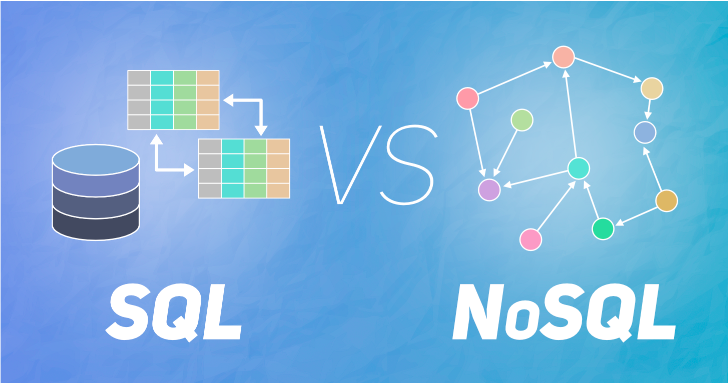Choosing between SQL and NoSQL is one of the first architectural decisions every technical founder or CTO faces. It’s not just about structure or syntax, it’s about performance, scalability, maintainability, and aligning with your business model.
Let’s break down the differences, strengths, and trade-offs and see how real-world startups make these decisions.
🔍 The Core Differences at a Glance
| Feature | SQL (Relational) | NoSQL (Non-Relational) |
|---|---|---|
| Schema | Fixed, predefined schema | Flexible, dynamic schema |
| Data Model | Tables, rows, columns | Key-value, Document, Column-family, Graph |
| Query Language | SQL | Varies (MongoQL, CQL, APIs, etc.) |
| ACID Compliance | Strong | Typically eventual consistency (some support ACID) |
| Vertical Scaling | Strong (traditional RDBMS) | Horizontal scaling (built-in) |
| Use Case | Structured data, joins, transactions | Unstructured data, high volume, fast access |
🏗️ When SQL Makes More Sense
1. Transactional Systems (e.g., Fintech, Invoicing)
- Why: You need atomic operations, rollback, and referential integrity.
- Best Fit: PostgreSQL, MySQL
- Real Startup Example:
A bootstrapped fintech startup building a KYC + transaction ledger for SMEs. Chose PostgreSQL because:- Precise financial records are critical
- Complex queries are required (multi-joins, views)
- ACID compliance is non-negotiable
💡 Tip: For anything involving payments, orders, or banking: start with SQL.
2. Analytics Platforms (Structured Logs, BI Dashboards)
- Why: You need structured aggregation, group-by operations, and consistent records.
- Best Fit: PostgreSQL + TimescaleDB, ClickHouse, or Snowflake for scale
- Example: A SaaS product that tracks feature usage across thousands of users. Early-stage design used PostgreSQL with materialized views for low-latency dashboard reads.
⚡ When NoSQL Wins
1. High Velocity, Schema-Free Ingestion (e.g., IoT, Event Streams)
- Why: Data is semi-structured or evolves over time; ingestion speed is key.
- Best Fit: MongoDB, InfluxDB, Apache Cassandra
- Real Startup Example:
An agri-tech startup deploying IoT devices across farms. They chose MongoDB because:- Sensor data varies by region and device
- Speed of writes > relational joins
- Schema flexibility allows iterative changes
2. User-Generated Content & Metadata (e.g., Social, Marketplaces)
- Why: Each user/item may have different attributes or nested objects.
- Best Fit: Document stores (MongoDB, Couchbase)
- Example: A C2C rental platform with users creating listings with custom fields. MongoDB allowed storing documents like:
jsonCopyEdit{
"title": "2BHK Flat in Pune",
"price": 14000,
"amenities": ["WiFi", "AC", "Kitchen"],
"rules": { "noSmoking": true, "noPets": false }
}
In SQL, this would require multiple join tables or JSON fields with poor indexing.
3. Real-Time, Low Latency Systems (e.g., Chat, Notifications)
- Why: You need sub-10ms reads/writes, possibly across regions.
- Best Fit: Redis, DynamoDB, Firestore
- Example: A consumer app that delivers real-time chat and alerts. Used Redis for ephemeral messages + Firestore for user profiles due to native mobile SDKs and low-latency sync.
🧩 Hybrid Architectures: Best of Both Worlds
Modern startups often use polyglot persistence using both SQL and NoSQL based on need:
- Use PostgreSQL for transactions and user profiles
- Use MongoDB or Redis for session data, product search, or caching
- Use BigQuery or Redshift for analytics
- Use Kafka + S3 for raw event storage
Example:
A B2B SaaS startup used:
- PostgreSQL for billing and authentication
- MongoDB for product customization data
- ClickHouse for usage analytics
- All stitched together via microservices
❌ Common Pitfalls to Avoid
- Choosing NoSQL just for scale — premature optimization.
- Over-using JSONB in PostgreSQL — lose indexing + query performance.
- Not modeling for access patterns — especially critical in NoSQL.
- Ignoring vendor lock-in — DynamoDB, Firebase, and others can be hard to migrate from.
✅ How to Decide — A Simple Framework
| Question | If Yes → Use |
|---|---|
| Do you need strong consistency, joins, transactions? | SQL |
| Is the schema flexible or evolving? | NoSQL |
| Are you building real-time, low-latency apps? | NoSQL (Redis/Firestore) |
| Do you need complex analytics or reporting? | SQL + Analytics DB |
| Do you expect massive horizontal scale early on? | NoSQL (Cassandra, DynamoDB) |
🚀 Final Thoughts
Your database should reflect your business logic and future roadmap. SQL isn’t outdated, and NoSQL isn’t magic. It’s about the right tool for the right job.
In early-stage startups, flexibility and simplicity often matter more than theoretical performance, so lean toward what your team can manage, iterate, and debug quickly.
⚖️ Rule of Thumb:
Use SQL unless you have a strong reason not to.
🔧 Bonus: Tools Worth Exploring
| Use Case | Recommended DB |
|---|---|
| General SQL | PostgreSQL, MySQL |
| Document Store | MongoDB, Couchbase |
| Key-Value | Redis, DynamoDB |
| Analytics | ClickHouse, BigQuery |
| Time-Series | TimescaleDB, InfluxDB |
| Graph | Neo4j, ArangoDB |
Have a startup and wondering what to pick? Drop your use case, happy to help you map the right architecture.
#SQLvsNoSQL #StartupArchitecture #DatabaseDesign #TechLeadership #ProductEngineering #PostgreSQL #MongoDB #Scalability




